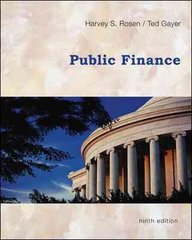In an effort to reduce alcohol consumption, the government is considering a $1 tax on each gallon
Question:
In an effort to reduce alcohol consumption, the government is considering a $1 tax on each gallon of liquor sold (the tax is levied on producers).
Suppose that the demand curve is Q D ⫽
500,000 − 20,000 P (where Q D is the number of gallons of liquor demanded and P is the price per gallon), and the supply curve for liquor is Q S ⫽ 30,000 P (where Q S is the number of gallons supplied).
a. Compute how the tax affects the price paid by consumers and the price received by producers.
b. How much revenue does the tax raise for the government? How much of the revenue comes from consumers, and how much from producers?
c. Suppose that the demand for liquor is more elastic for younger drinkers than for older drinkers. Will the liquor tax be more, less, or equally effective at reducing liquor consumption among young drinkers? Explain.
Step by Step Answer:






